 |
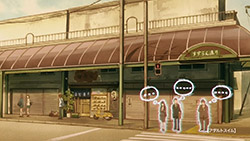 |
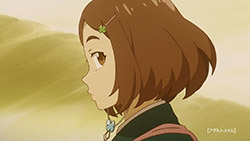 |
 |
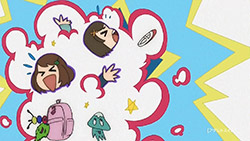 |
 |
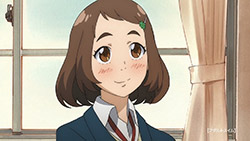 |
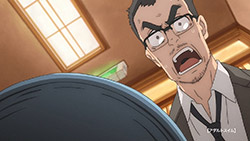 |
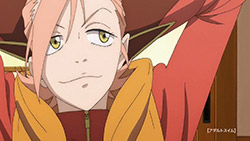 |
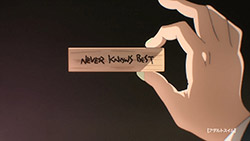 |
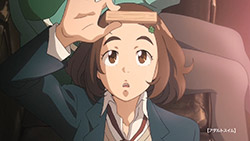 |
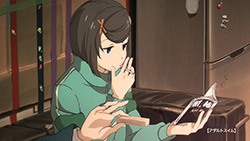 |
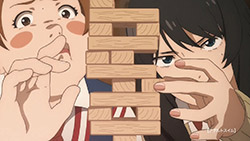 |
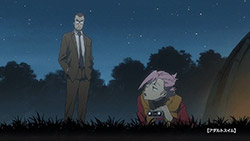 |
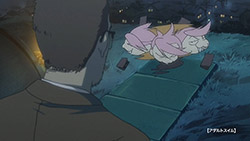 |
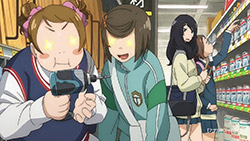 |
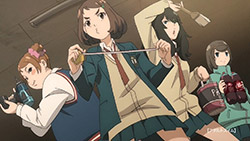 |
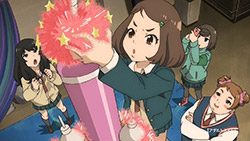 |
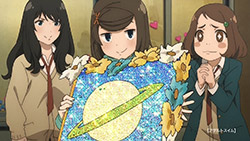 |
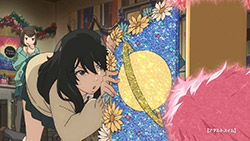 |
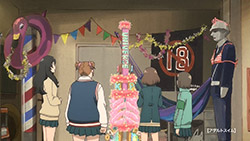 |
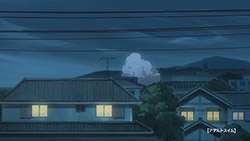 |
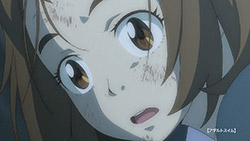 |
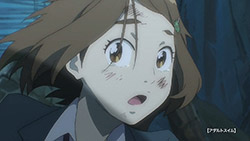 |
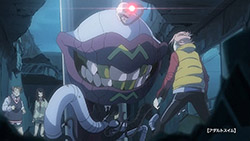 |
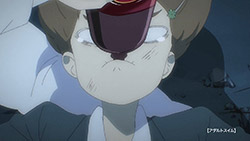 |
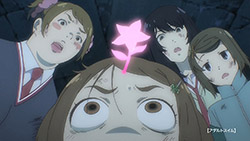 |
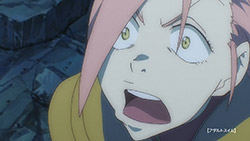 |
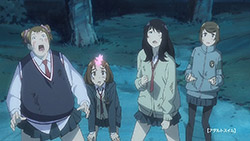 |
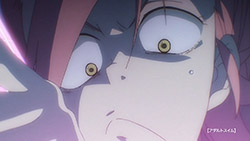 |
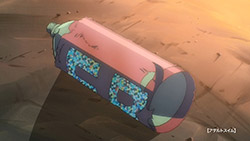 |
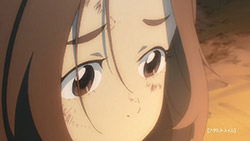 |
 |
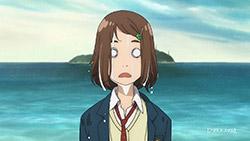 |
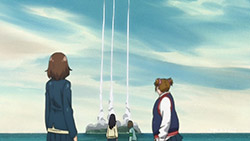 |
 |
「フライーング・メモリー」 (Furaiingu Memorii)
“Flying Memory”
Setting the Scene
For years, Adult Swim has made their April Fools jokes as baffling as possible from adding fart sounds to their anime premieres and airing the Aqua Teen movie on TV in microscopic form, to their recent screenings of cult classic The Room and debuting a Rick and Morty premiere way earlier. Taking a page from last year, they decided now would be the time to unveil the new two-part sequel series to FLCL, titled FLCL Progressive and FLCL Alternative. Oddly enough, they chose the first episode of the third season, Alternative, as their starting point. Whether premiering this before an episode of the second season will be determined once this particular episode makes its true debut in September. But for now, this episode of FLCL Alternative might just be what is indicative of the quality we will be expecting from this sequel series.
Since the two seasons were announced, a giant elephant in the room has been how amazing FLCL is as a standalone 6-episode series when it first popped up in the early 2000’s. It was the chance that Gainax took on its up-and-coming animators to create their own OVA alongside Production I.G., and director Tsurumaki Kazuya went out of his way to ensure that it has it’s own personality, disturbing the system with experimental animation and a youthful rock soundtrack from the pillows. FLCL was this self-contained, special thing intended on being merely a launchpad for the creative efforts that Gainax was able to pull off with the freedom that their prior success had given them, and breed new talent that would eventually go on to be involved with contemporary hits.
But then, in a twist of fate, life happened. Many of those involved with FLCL would go on to either move on to different studios like Studio Trigger or Studio Khara, or stay with Gainax as their creative efforts dwindled, their legal troubles intensified, and their assets continued being sold off, including FLCL, which now resides in Production I.G.’s hands. Enter Adult Swim, the channel whose love for FLCL has been documented for years, and now had a good chance of being able to co-produce a continuation of the series with I.G.
For many, it sounds like sacrilege. FLCL is easily the best example of an anime that can tell a simple, imaginative, fun, and engaging story in only 6 episodes, so seeing it stretched out for 12 more episodes more than a decade later is hard to swallow. With Adult Swim’s responsibility in wanting to extend FLCL for quite some time and the involvement of very little of the original staff other than the character designer, the director’s supervision, the pillows, and the voice actress for Haruhara Haruko (Shintani Mayumi), it is bound to ruffle up some feathers. However, in its differences, can it still come up with something original and interesting? Can it overturn the skepticism that comes with making a sequel from an older, highly-revered series? Is it going to feel natural or will it be a cynical attempt to force a finished series back to life?
First Impression: Progressive
Going into it with fond memories of watching and loving FLCL first in gritty pixelated Youtube videos from 2005 and then on Adult Swim, I was skeptical about how necessary the idea of a sequel felt. I’m open-minded enough to appreciate any additions that work well with the universe, but at the same time understand that it’ll be hard to live up to how great the original was. Although these concerns weren’t 100% alleviated given how different a beast this new sequel is in its production, it retains enough of the spirit and spunk of the original series to at the very least propose interesting ideas with the potential of belonging as a fun chapter in FLCL‘s story.
Aesthetic and Animation
Right away, the character designs help bridge the gap between this newer series and the original as the cast and art feel like they belong. The characters are expressive, their eyes have a stenciled-in look to them that matches the original show’s artwork, and Haruko doesn’t look like a completely different person save for a different hairstyle. There are little touches that make it still feel like it fits with FLCL‘s sense of style like the chalkboard tracing from the beginning, the comically-detailed in-between frames, and, as always, the pillows playing in the background to capture the enthusiasm and excitement of being young.
However, what it makes up in spirit, it lacks in imagination and flow. There are callbacks that feel like they were created for the sake of fanservice such as our main heroine Kana (Miyama Karen) pulling out a wood block that happens to have “Never Knows Best” written on it because Mamimi wrote that on her cigarettes, how the male characters eat their eggs, or setting up the basis for another guitar for Haruko to pull out and fight mechanical aliens with. Sadly, the animation doesn’t have the fluidity that went into the action scenes from the original, giving everything from the final fight sequence to standard school-life scenes a stiff feeling that is neither fooly nor cooly. And with none of the crazy shots or animation switch-ups that gave the original life of its own, the episode has times where it feels like a far cry from the fun the series had in breaking the rules, and scenes are animated to look average and conventional to tell its narrative.
Story and Characters
While it’s animation is hit-or-miss in being in-touch with the original, the narrative itself works decently enough. The first episode is promising in adding to the series’ lore with the town of Mabase’s contending with the extra-terrestrial. The prime minister makes a popular and aggressive push to ban space travel to prioritize societal woes on earth over exploration beyond the stars, all the while Haruko is working in collaboration with the Space Police Brotherhood to find more N.O.’s and eventually the link back to Atomsk. The plot fits well with what would be happening within this stretch of time, so it doesn’t feel like an unnecessary add-on so much as it feels like an extension of the politics behind what Haruko would have to do in order to find Atomsk without relying on the same trick she used with Naota again. In an age where technology is becoming sophisticated and space travel is more contentious, its interesting to see how FLCL Alternative handles the passage of time in society’s developments between the original series and now.
The good thing is that the most promising aspect of FLCL Alternative isn’t trying to relive the glories of the yesteryear, but rather seeing the dynamic between Kana’s group of friends. The girls are engaging to follow as a group of friends that truly appreciate their time with each other, and have their own set of quirks and charm that exceeds our expectations on what they would act like, going beyond tropes to show how fun they are as characters. Kana is a relatively mysterious lead at the moment, but is able to bounce off each of her friends very well, giving each of the girls a chance to shine. Pets (Yoshida Yuri) has a mischievous air to her as she has it a little more together than Kana yet passes the time chain-smoking, drawing eyes on her hands, and taking upskirt photos of Hijiri. Mossan (Tamura Mutsumi) seems like your standard chubby character that is willing to pound down Dr. Pepper bottles, but she is easily the most level-headed of the girls, and has a deeper interest in creating the bottle rocket the girls plan to launch in the air. Finally, we have Hijiri (Iida Riho), a fun-loving girl who’s interest in modeling and marrying into money are only secondary to how goofy and eccentric her personality and mannerisms can get. They’re all a lot of fun to follow and despite some not being too keen on the idea of wanting to watch FLCL to watch gals be pals, it does a great job at soaking in the youthful experience of the series’ tone by embracing the joy of hanging out, talking about life, and reaching a common goal with school friends.
First Impression: Alternative
FLCL Alternative might not be as visually delicious or unique as the original, but it still retains the spry charm and atmosphere that made FLCL a show that captured its coming-of-age story so well. At the moment, the story doesn’t feel tacked on or unnecessary, and Kana and her friends’ encounter with Haruko have potential to add to the original with an entertaining story that builds on the relationship between the town of Mabase and the extraterrestrial. The camaraderie and friendship between the girls is refreshing, engaging, and offers a new way of seeing how a coming-of-age story like FLCL would fare with a friend circle instead of focusing on one solitary kid. The fact that our leading protagonists are girls is also nice because it gives the anime-watching audience a break from yet another “everything is phallic” metaphor that over-saturates a lot of contemporary anime.
As hard as I am about how it isn’t as creative or fluid as the original, it’s the differences in Alternative that make me enthusiastic about the prospect about seeing more from Kana’s friend circle. The first episode left me looking forward to seeing how they interact with Haruko and the aliens that surface, how Kana’s N.O. capabilities are handled, and where the future of space travel goes from here. It’s definitely given me a better impression of how the sequels might turn out than my initial feelings about the project, and Kana’s side of the story is shaping up to be much more intriguing than I would’ve thought. But until September when the rest of Alternative is released, ride on shooting stars. Ride on.
ED Sequence
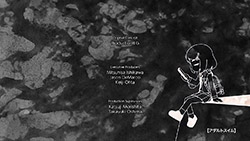 |
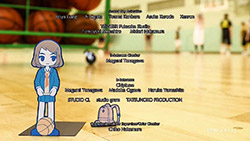 |
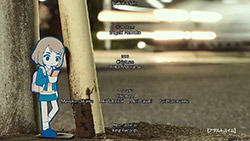 |
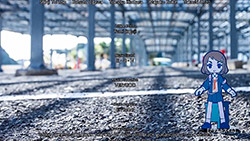 |
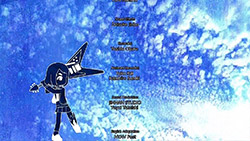 |
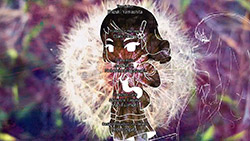 |
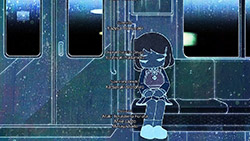 |
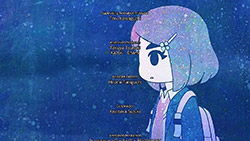 |
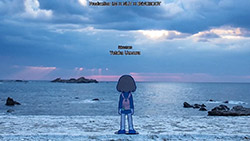 |
ED: 「Star Overhead」 by the pillows

So if this was FLCL 3:
https://randomc.net/image/FLCL%20Alternative/FLCL%20Alternative%20-%2001%20-%20Large%2027.jpg
then we’ve already seen FLCL 2:
https://randomc.net/image/Sora%20Yori%20mo%20Tooi%20Basho/Sora%20Yori%20mo%20Tooi%20Basho%20-%20ED2%20-%20Large%2003.jpg
As shallow as this reference was, I’m still using it as my wallpaper for this month.
https://randomc.net/image/FLCL%20Alternative/FLCL%20Alternative%20-%2001%20-%20Large%2010.jpg
Also, good job on cherrypicking all the screencaps without subtitles in them. That had to have been hard on you, and I commend you for getting through it.
It was easy because I took a lot of caps and only had to weed through the ones that didn’t have subtitles, but it was murder on the soul because I had to delete so many Hijiri screencaps where she made cute or funny faces.
Out of the three references to the original you pointed out, the “never knows best” one is the only one i legitimately deemed as this ep trying too hard to reference the original; every other reference was really fair game and was integrated organically into the episode. That aside, onto the visuals. I’m of the opinion that Alternative is meant to be more subdued visually compared to the original and progressive. I pointed this out while having a mini discussion with enzo over on his site:
Both of these “flcl’s” seem to want to tap into/embody integral aspects about the nature of the original’s narrative. Progressive seems to be the one that wants to be more like the original flcl in terms of its superficial presentation (how kinetic and rapid it is visually and narratively) while alternative wants to be well…..an alternative take on the core aspects of flcl, focusing more on the subtext of the series in a more direct way instead of being overly allegorical (yoji enokido is the one we can thank for that) while peppering in some live action sensibilities (which makes sense when you take into consideration who the chief director and script writers are for these seasons).
when the alternative and progressive combo trailers dropped, one thing I instantly noticed between the two was that progressive was much more kinetic both in its animation and its attempts to call back to imagery from the original. Alternative on the other hand seemed much more restrained and relied less on harkening back to the original’s style. You sound like the observant type so if anything, go back and watch the previews and look at the differences between progressive and alternatives shots and layouts; progressive definitely feels like the one really trying to be flcl hence the title: progressive
Alternative aims to be an indie film about teenagers being teenagers; the feeling of wasting your time away and how fleeting comfortableness and complacency can be. Thinking about it now, it makes sense why japan has alternative airing before progressive; it’s because it’s the one that feels the least like flcl on immediate watch. They’d probably rather have the second season be the one to have a lasting impression on viewers as its the one that’s visually trying to pantomime gainax’s stamp on the original. I’ve seen impressions on alternative (both positive and negative) and one of the criticism from negative parties (and used as praise by some positive parties) that baffles me is how some people think alternative was trying to be so similar to the original. Like What? if anything, alternative does everything it can to not be like the original; everything feels different beyond a few nods and a song from the pillows coming in halfway throughout the episode. What it retains of the original is being a story of adolescence told in a way that is unconventional for anime (Original felt like a long music video; alternative feels like an indie film about four 17 year old girls)
*You sound like the observant type choya*
As for those who are vehemently against sequels to flcl and wonder why these two sequels needed to be called flcl, well once again in a convo with enzo i stated:
If you want a superficial yet valid reason for why these sequels needed to be called flcl, well they are borrowing the iconography of the original and using them to tell their story. Go figure right? that’s as obvious to you as it is to everyone else (ill get into why that’s a significant reason). I mean it would be straight up plagiarism if they said “hey, look at this character that acts and sounds like haruko, we’ll just call her Koruha and rather than using a guitar to beat shit up, she’ll use a pair of castanets and rather than exclaiming ‘chaaaaaaansu’…she scream ‘Aaaariiiiiiiiba.'” The original flcl wasn’t about it’s world as much as it was about tsurumaki and enokido’s exploration of adolescence and the embracing of emotional honesty as the essence of maturation; However, the world of flcl was an invigorating template nevertheless that left its indelible prints in the zeitgeist of anime and its one that creative minds probably want to put their own spin on. It’s a world that you can still use to tell a story and that factor is usually the immediate justification for calling something a sequel. If anyone is going to lift it to tell any more stories, you gotta make it a successor and slap the brand on it. The possibility of the story expanding on the mysteries of medical mechanica, the fraternity and why they are at odds; who the pirate king is and his relationship to haruko and what ultimately drives haruko’s agendas provides enough justification for a narrative dealing with these things to be called “flcl” on just a superficial level. But now that i have answered the macro-level question, you’re probably wondering about the microlevel reasons
For a more sub-textual and meta-textual reason, i had said in a discussion we had way back that the essence of flcl is not just naota, but more of an intimate discussion between writer/director and its audience about how they felt as an adolescent growing up and how much perspective they have gained on their journey to adulthood now that they are older. The people working on these new projects are they’re own people with their own worries and tribulations who want to express those insecurities just like Tsurumaki and enokido. Remember that flcl was originally meant to be gainax just fucking around and having fun like they did with daicon IV before enokido and tsuramaki decided they should also make it something more. These two sequels are called flcl because we have a new team of talent (both writing and animation) who want to do the same thing tsurumaki and enokido did with a property that they have affection for. They are using the trappings of the original to help tell the story of these new protagonists; these are sequels that will earn the title of flcl if they end up being a celebration of the creative passion the writers and directors place into these new characters and whether they are fulfilling enough to embody the themes of flcl? That’s what truly matters. What do the authors of this new project want to tell us about their experiences with growing up at this point in their life? what are their perspectives now that they are old enough to reflect on these truths of life? how does the abstract, psychedelic visuals play into this period of confusion? It is this coalescing of these elements that make these sequels have to be called flcl; I mean that’s what makes flcl is it not? An encapsulation of the tumultuous, confusing, perplexing, frustrating, yet ironically invigorating journey of growth? I think this is the truth of something like flcl.
A sequel needs to do two things to at least justify its existence: it should honor the ideas set forth by the original, build upon them, yet also be allowed to catalyze elements of the original into something new and refreshing. A sequel doesn’t necessarily need to be better than the original; it just needs to be able to say something relevant about it. Our media consuming society for some reason are so obsessed with follow-ups needing to be better to justify their existence. I mean, if that was the case, why make a sequel to anything if we are to assume there really isn’t a point to them or that they must absolutely measure up to the original. Did Eureka 7 really need a sequel? No; yet we got one. Did Ao really need to be called Eureka 7? Did Blade Runner 2049 need a sequel? Did 2049 need to be called Blade Runner? People create additions to stories because they feel like there could be more to add or they can say something different but valuable about the ideas of that story. They love the world, the setting, and the themes of a particular story and aim to say something through those things. The desire to add to pre-existing work is a creative impulse that should not be cynically handwaved as “oh, this is just for the sake of a cash grab” or to be dismissed entirely. It’s a part of how we as human beings evolve as storytellers; it’s how creativity should thrive. Of course when making a sequel to a beloved IP, there’s always going to be a bit of, “hey, remember how much you loved X? We’re doing that again” calculated into getting you to buy into the product. But that’s something inherent in anything that you decide to create an extension of; it cannot be avoided. In the end, that shouldn’t take away from a creator’s genuine drive to want to channel their aspirations through that art and create a story from it. A smart person had once said that we should not pretend like the work of others cannot be improved on by input from the outside just because it was originally never your idea or that there is existing template of it. Just because the work didn’t belong to you doesn’t mean you can’t add something essential and profound to the already existing work. Denis Villenueve directed the shit out of 2049; he expanded the world and the characters in a somber, quiet, yet utterly engaging way. By the end of his film, 2049 was anything but frivolous; he justified why blade runner deserved a sequel, a project in which some were vocal about it being a cash grab as well, which in reality, was an unjustified claim because the original was a box office failure.
The original flcl was a complete story that didn’t need a sequel in the sense that there was no point in continuing that particular story; that’s why 2 and 3 behave a lot more like spiritual sequels rather than direct sequels. They are only meant to take place within the template of flcl (which again, is not a bad thing) and use it to tell their own adolescent coming of age tale that reflect the frustration and difficulties of growing up. Flcl 1 is Naota; it’s special because it’s about Naota, tsurumaki, and enokido. Now flcl 2 and 3 can be about other people and that’s okay. It can be special because we can let it be about Kana and Iwai-san and Motohiro-san. That’s what flcl has always been so it makes sense that alternative and progressive would carry that brand name. Now as for whether they truly deserve to be called flcl or not, I’ll know for sure when I watch both sequels to their completion. If you are looking for a definitive reason why flcl 2 and 3 have the flcl brand, I can’ tell you that until they are both released to their completion; however, you were looking for a tentative but comprehensive reason based on 1 episode, previews and a huge fan of the original, well there’s your reason. There are things im not too keen on about alternative so far (it feels like a 7 right now); but if I were to delve into those we’d be here all day. One of the misgivings I will quickly mention was how the integration of the pillows into the ep. For one, I thought we were supposed to get brand new music tailor-made for both seasons. According to some who watched the episode, they said that the insert song was a track from an old Pillows album. Anyway, that leads me to my next point: notice how I said “insert song” to describe a pillows track used in flcl. I get what this first ep might have been going for and i don’t mind it considering the kind of narrative texture this season seems to be attempting to cultivate, but i found the integration of the pillows music in the original to fell far more diagetic, effective and seamless in weaving both the tonal artifacts and the themes of an episode. The way it was done in this first ep may not be how it’s done for the rest of the series, but i think the choices made in the original regarding the music was stronger. Alternative’s choices weren’t bad; I like it, but I liked the original’s method much better.
wow man, ima read this…….someday.
I don’t know what’s more unexpected. That Toonami did this for their April Fool’s broadcast, or RC actually covering this episode months before its official run!
Look. This will be made by different people, at another studio, under different circumstances, than GAINAX’s regenade crew 18 years ago. IT WILL BE DIFFERENT BY DEFAULT. I appreciate their efforts to recapture the feeling of excitement from watching the OVA, but I can tell the animation doesn’t even hold a candle to the original, and the idea of cute girls doing cute things isn’t exactly what got me interested nor what I expected from FLCL. Given how this is the beginning of only ONE of the seasons here, I look forward to the other one moreso.
That said, the ED isn’t Ride On Shooting Star but I don’t think they aimed to top that. It’s got more a melancholy, cute tone with very adorable chibis, stop-motion papar animation, and a chill tune.
The dub will premiere on June 2nd, and the other season will preimere dubbed in September, only on Toonami! On Adult Swim!
Huh. I remember exactly nothing about FLCL other than the spiffy animation. So I guess I’m glad that this is basically unrelated…?
Too many people swinging their judge gavels. Just strap in and enjoy the ride.